The iPhone XS & XS Max Review: Unveiling the Silicon Secrets
by Andrei Frumusanu on October 5, 2018 8:00 AM EST- Posted in
- Mobile
- Apple
- Smartphones
- iPhone XS
- iPhone XS Max
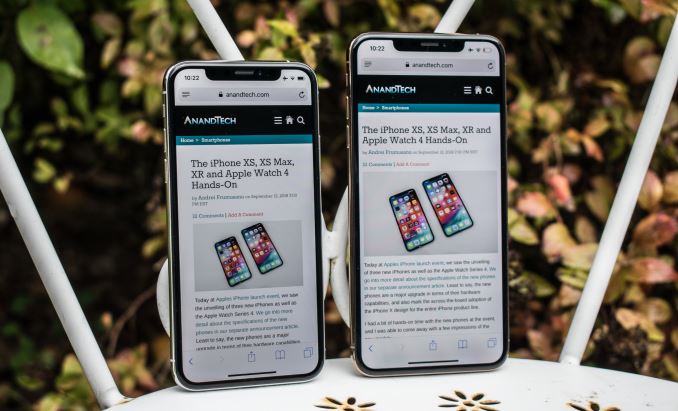
It’s been a little over three weeks since Apple unveiled the new iPhone XS, XS Max and the XR. The new flagship line-up is one of Apple’s most important ones to date; this year we’re seeing the company expand last year’s new iPhone X design across all of its new models, meaning big changes for all users. 2018 has been an odd year for the smartphone market as more than ever before we saw the competition try to react and also mimic the iPhone X – the design language especially has been something that we saw replicated across a lot of various designs.
Instead of iterating on the design, Apple has stayed true to its “S” generation release tradition and doubled down on what we saw last year with the iPhone X, all the while expanding the design across new form-factor phones as well. Today we review the first two of this year’s three new models: the iPhone XS, and its bigger brother the iPhone XS Max. The iPhone XR unfortunately releases later on this month – so we'll be taking a look at it separately.
Today we’ll be going into the detail of all aspects of the phone, included a much awaited deep dive of the new A12 SoC. Given Apple's ever-growing focus on the camera capabilities of their phones, I have also prepared an extensive camera comparison for this review – comparing shots across different modes on 14 devices. Hang in tight, this is a long one.
Starting off, let’s go over the specifications of the new iPhone XS and XS Max:
| Apple 2018 iPhone XS Specifications | |||
| iPhone XS | iPhone XS Max | ||
| SoC | Apple A12 Bionic 2 × Vortex @ 2.5GHz 4 × Tempest @ 1.59GHz |
||
| GPU | 4-core "G11P" @ >~1.1GHz | ||
| DRAM | 4GB LPDDR4X | ||
| Display | 5.8-inch OLED 2436×1125 DCI-P3/True Tone 625 cd/m² brightness 1M:1 contrast ratio 3D Touch |
6.5-inch OLED 2688×1242 DCI-P3/True Tone 625 cd/m² brightness 1M:1 contrast ratio 3D Touch |
|
| Size | Height | 143.6 mm | 157.5 mm |
| Width | 70.9 mm | 77.4 mm | |
| Depth | 7.7 mm | 7.7 mm | |
| Weight | 177 grams | 208 grams | |
| Battery Capacity | 2658mAh / 10.13Wh | 3174mAh / 12.08Wh | |
| Wireless Charging | Qi | ||
| Rear Cameras | 12 MP 1.4µm pixels, f/1.8, OIS Wide Color Gamut Quad LED True Tone Flash Portrait Mode, Portrait Lighting, Depth Control |
||
| 12 MP f/2.4 Telephoto, OIS 2x Optical Zoom Portrait Mode, Portrait Lighting, Depth Control |
|||
| Front Camera | 7MP f/2.2 Wide Gamut, Retina Flash, Portrait Mode, Portrait Lighting, Depth Control |
||
| Storage | 64 GB 256 GB 512 GB |
64 GB 256 GB 512 GB |
|
| I/O | Apple Lightning | ||
| Wireless (local) | 802.11ac Wi-Fi with 2x2 MIMO + Bluetooth 5.0 + NFC | ||
| Cellular | Intel XMM7560 Modem UE Category 16 LTE (1Gbps) with 4x4 MIMO and LAA |
||
| Splash, Water, Dust Resistance | IP68 up to 2 meters, up to 30 minutes |
||
| Dual-SIM | nano-SIM + eSIM nano-SIM + nano-SIM (China model) |
||
| Launch Price | 64 GB: $999 256 GB: $1149 512 GB: $1349 |
64 GB: $1099 256 GB: $1249 512 GB: $1449 |
|
At the heart of the new iPhones is the brand new Apple A12 SoC. The new chipset is the very first consumer piece of silicon that is being manufactured on TSMC’s new 7nm process. The new process promises greater transistor density and reduced die area of the chip, which gives Apple the ability to cram in more transistors in the same area, ultimately increasing the complexity and capabilities of the new SoC. We’ll go into more detail about the process node in a dedicated section, but least to say, in terms of sheer transistor counts it’s a healthy jump for Apple’s newest design.
The SoC’s CPU complex is now powered by two new “Vortex” CPU cores running at up to 2.5GHz, providing new levels of high performance. Apple claims the new CPUs perform around 15% better than last year’s A11 Monsoon cores – here it seems the company’s marketing was a tad conservative as the real performance figures of the new CPU are significantly higher. Alongside the performant Vortex cores, we see four new smaller efficiency cores named “Tempest”. The new small cores bring some performance improvements, but it’s mostly in terms on power and power efficiency where we see Tempest make some bigger leaps.
The A12’s GPU is the G11P – here Apple has made the biggest performance claims, advertising up to 50% higher figures. We’ll see how the new successor to last year’s A11 GPU in its dedicated section.
On the memory and storage side of things, we now finally see a significant boost in main memory capacity, as both the iPhone XS and XS Max sport 4GB of LPDDR4X RAM, up from 2GB and 3GB in the iPhone 8/X family. In terms of storage capacity, the new models come in 64, 256 and 512GB tiers. Here it’s a tad disappointing to see the base model come in at only 64GB, I think offering 128GB would have resulted in a much more even distribution in the models.
Front and centre of the new iPhones is the new “Super Retina” OLED display. Apple first introduced OLED displays in its lineup in the iPhone X – and the new iPhone XS and XS Max are a continuation of that panel, with an obviously bigger iteration for the Max. The displays are outright fantastic and among the best in the market, offering a fully colour managed wide "Display P3" gamut, very high brightness up to 650 cd/m², and excellent viewing angles. The iPhone XS has the same resolution as last year’s iPhone X, at 2436 x 1125 pixels, while the XS Max maintains the same pixel density by increasing the pixel count to 2688 x 1242.
On the back side, both phones are again a continuation of the iPhone X design. The glass back offers NFC and wireless charging capabilities. Wireless charging has seen an upgrade and claims to be able to charge faster, and also improve on the off-centre and off-axis charging performance.
Apple has worked with Corning to create a new formulation that is said to improve durability and scratch resistance. I’ll leave the testing of this to other people!
The sides of the phones come in highly glossy “surgical grade” steel. While I do appreciate Apple’s intent here, and I understand some people have personal preferences, I’m not a big fan of such finishes as I find them impractical and more slippery than the anodised aluminium of previous generation iPhones. It’s also a hell of a fingerprint magnet.
While the iPhone XS is more or less indistinguishable from the iPhone X – the one visual difference between the new and old is found in the lower left and upper right corners. The left microphone grill has halved its size and is only three holes wide now. Here Apple has introduced two new antenna cut-outs in the corners that serve the two new cellular antennas which enable the iPhone XS’ to achieve 4x4 MIMO.
Indeed in terms of cellular connectivity, the new iPhones boast a significant jump as we’ve seen an upgrade in download speeds to a gigabit for LTE networks. In terms of internals, this was achieved by now exclusively adopting Intel’s new XMM7560 baseband platform. This is Intel’s first chipset to support CDMA and also the first modem to be manufactured on Intel’s own 14nm process.
On the camera side of things we see the same dual 12MP camera module configuration as on the iPhone X – a normal wide angle and a zoom lens. The big difference with the XS is the upgrade in sensor size from an area of 32.8mm² to 40.6mm². Because the lens has remained the same and also offers the same f/1.8 aperture, the increase of the sensor size results in a slightly wider field of view than last year’s models. Light sensitivity has been increased thanks to the bigger sensor, and hence, the bigger pixels, increasing in size from 1.22µm to 1.4µm. The telephoto lens remains largely similar, with a 12MP 2x zoom module.
The iPhone XS Max in contrast to the iPhone XS is just a much bigger device. Apple noted that it’s calling it the “Max” instead of the “Plus” denomination, because it has no added features, and is just a bigger variant of the smaller XS. Here I applaud Apple for not making any feature discrepancies based on the model size – something I really hated in the past with the dual camera being found only on the Plus models.
The iPhone XS Max has a 3174mAh/12.08Wh battery while the smaller XS features a 2658mAh/10.13Wh battery. While Apple calls this the biggest battery ever in an iPhone, and that’s true, Apple is still a tad behind the battery densities that Android manufacturers have now come to commonly use in larger form factor phones.
Again, in a comparison between the iPhone X and the new iPhone XS – you’ll be hard pressed to see the difference and you’ll really have to focus to find the new antenna cut-outs to tell them apart.
Meanwhile the iPhone XS Max is largely the same form-factor as the iPhone 8 Plus, although the Max is technically 0.7mm narrower and 0.9mm shorter. For users opting for the larger models, the biggest difference is of course the massive increase in screen size, and I have to say, the XS Max does look very good due to its sheer screen-to-body ratio, which is higher than the smaller XS.
Finally the last big mention before we go deep into our review the price of the new phones. These new models are not successors to the iPhone 8 and 8 Plus – something I imagine the iPhone XR will have much more success in achieving – but rather continuation of the new high price points of the iPhone X. The higher storage capacity price points in particular are exceptional, coming in at $1349 for the XS and $1449 for the XS Max. If the price is worth it for you, is something you best decide along with us as we go deeper into the hardware of the new phones.



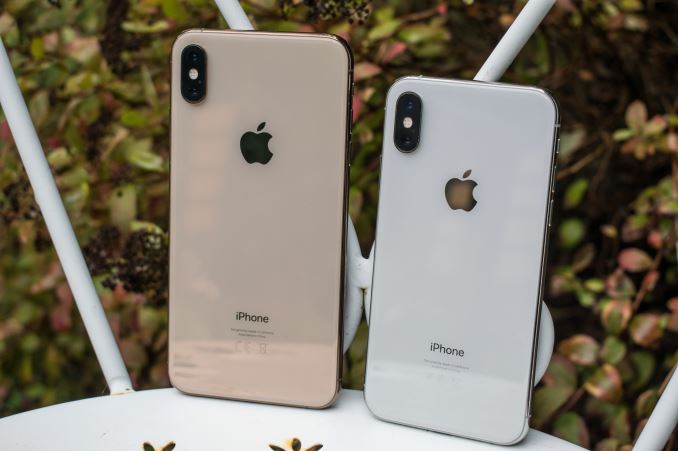

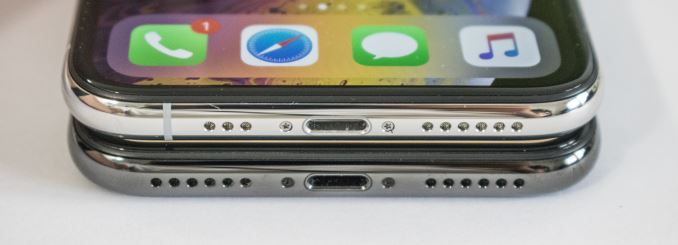
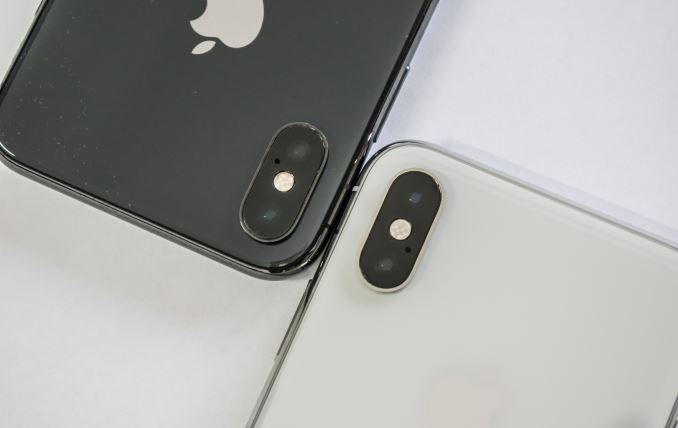
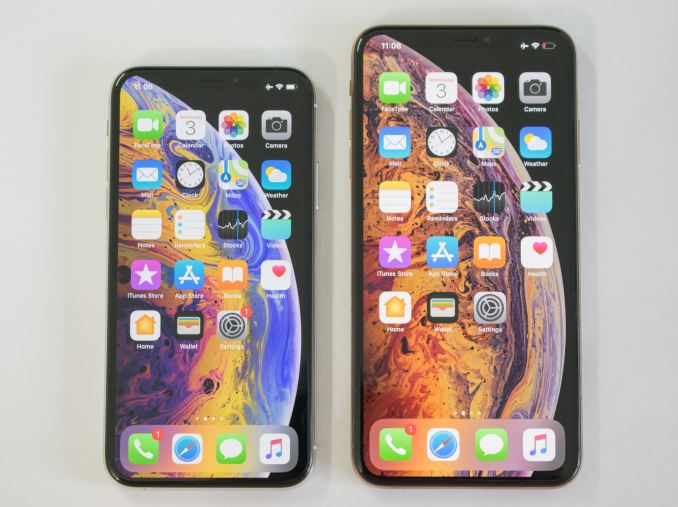
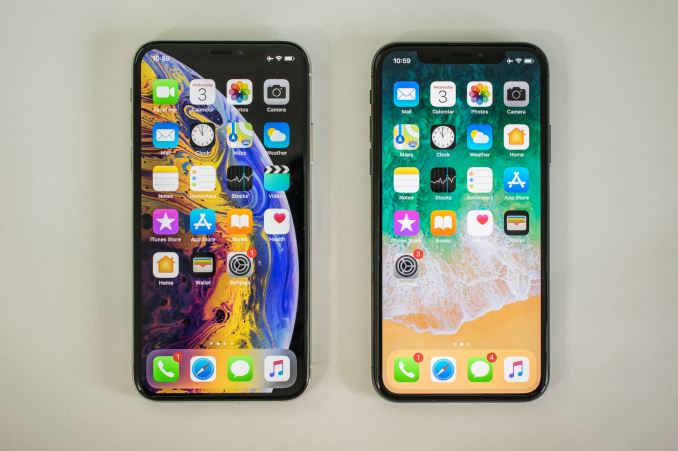
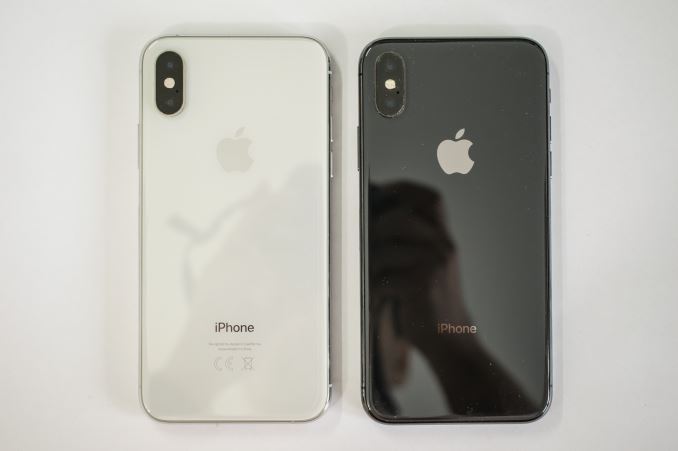
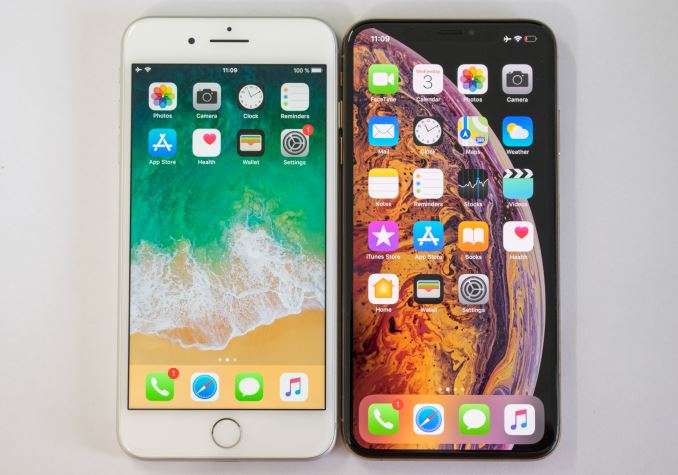
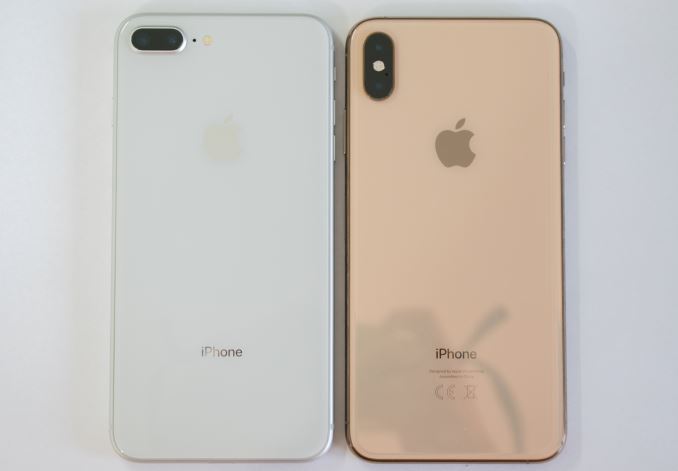








253 Comments
View All Comments
FreckledTrout - Friday, October 5, 2018 - link
Pretty typical with any high end products. The top 10% pave the way for the rest to have these products at a reasonable price a few years later. You can get an iPhone 7 pretty cheap now.MonkeyPaw - Friday, October 5, 2018 - link
It’s still cheaper than my first PC, a 486sx2 running at 50mhz. RAM and hard drives were still measured in megabytes, and the internet made noise before connecting and it tied up your phone line when you used it. There has also been about 20 years of inflation. Flagship smartphones are expensive, but they sure do a lot. That doesn’t mean I’m buying one, but we’ve come a long way in my hopefully-less-than-half-a-lifetime.keith3000 - Friday, October 5, 2018 - link
OMG! Exactly what I was thinking as I read this review on my $225 T-Mobile Rev VL Plus. I may not be able to afford such a technological marvel as the iPhone XS MAX, but I bet I get anywhere from 80-to-90% of the overall functionality for one-fifth the price. I've bought many premium smart phones over the years, starting with the HTC EVO 4G LTE many years ago, followed by Samsung Galaxy S3, then the S4, and even the gigantic Asus Zenfone 3 Ultra. Each phone was better than the one before, and yet each were major disappointments to me for various reasons which I won't go into here. Suffice to say that the ever increasing cost of each phone raised my expectations about what they should be able to do, and thus contributed to my sense of disappointment when they failed to live up to the hype. So when the Zenphone 3 crapped out on me after less than a year of use and I saw this cheap Rev VL Plus, I decided to stop wasting so much money on these overpriced devices and buy something that wouldn't leave me feeling robbed or cheated it it didn't turn out to be the "next best thing". Now, after almost a year of use, I feel like it was a good decision. And if something better comes along in a few months at a similar price point, I can buy it without feeling remorse for having wasted so much money on a phone that didn't last very long. So all you 10-percenters - go ahead and throw away $1,200 on a phone. I'm quite content to have a 2nd rate phone and save a thousand dollars.ws3 - Sunday, October 7, 2018 - link
You say you spent $225 on your phone less than (but almost) a year ago and then say that you would be willing to replace it immediately if some other phone interested you. So you are apparently willing to spend around $225 for one year of ownership of a phone.By this metric you should be willing to spend $1000 on a phone provided you keep it for 4 years or more.
Now it may the the case that you don’t want to keep any phone for four years, and so the iPhone X[S] is not for you. But here I am with an four year old iPhone 6+, that still works great (thanks to iOS 12). I similarly expect the iPhone X[S] to be good for four years at least, so, although I am not a “10%er”, I am seriously considering purchasing one.
It’s simply a fallacy to assert that only the wealthy would be interested in the latest iPhone models.
FunBunny2 - Sunday, October 7, 2018 - link
"Now it may the the case that you don’t want to keep any phone for four years, and so the iPhone X[S] is not for you. But here I am with an four year old iPhone 6+, that still works great (thanks to iOS 12). "ergo, Apple's problem. unfulfilled TAM for iPhones is disappearing faster than kegs at a Georgetown Prep gathering. keeping one longer than a cycle is a real problem for them. they will figure out a way to stop such disloyalty.
ex2bot - Sunday, October 7, 2018 - link
They’ll find a way, like supporting the 5S and later with iOS 12. /sicalic - Friday, October 5, 2018 - link
Hi Andrei Frumusanu,Thanks for extraordinary review of iPhone Xs!
in page one you said A12 GPU 4-core "G11P" @ >~1.1GHz, i have several question.
1. how do you estimate that clockspeed?
2. if you know that clockspeed can you estimate how many GFLOPs FP32 and FP16 on A12 GPU?
syxbit - Friday, October 5, 2018 - link
Great review of the SoC.Please, when you review the Pixel 3, or (in 2019), updated Snapdragons, hold them to this bar.
I get really frustrated when I see your (or other) reviews complimenting the latest Snapdragon even though they're miles behind the Ax.
As an Android user, I find it very unfortunate that to get my OS of choice I must get inferior hardware.
edzieba - Friday, October 5, 2018 - link
Phone reviews are a review of the phone, not just the SoC.syxbit - Friday, October 5, 2018 - link
I know that, but the SoC is the area where Apple are completely dominant.